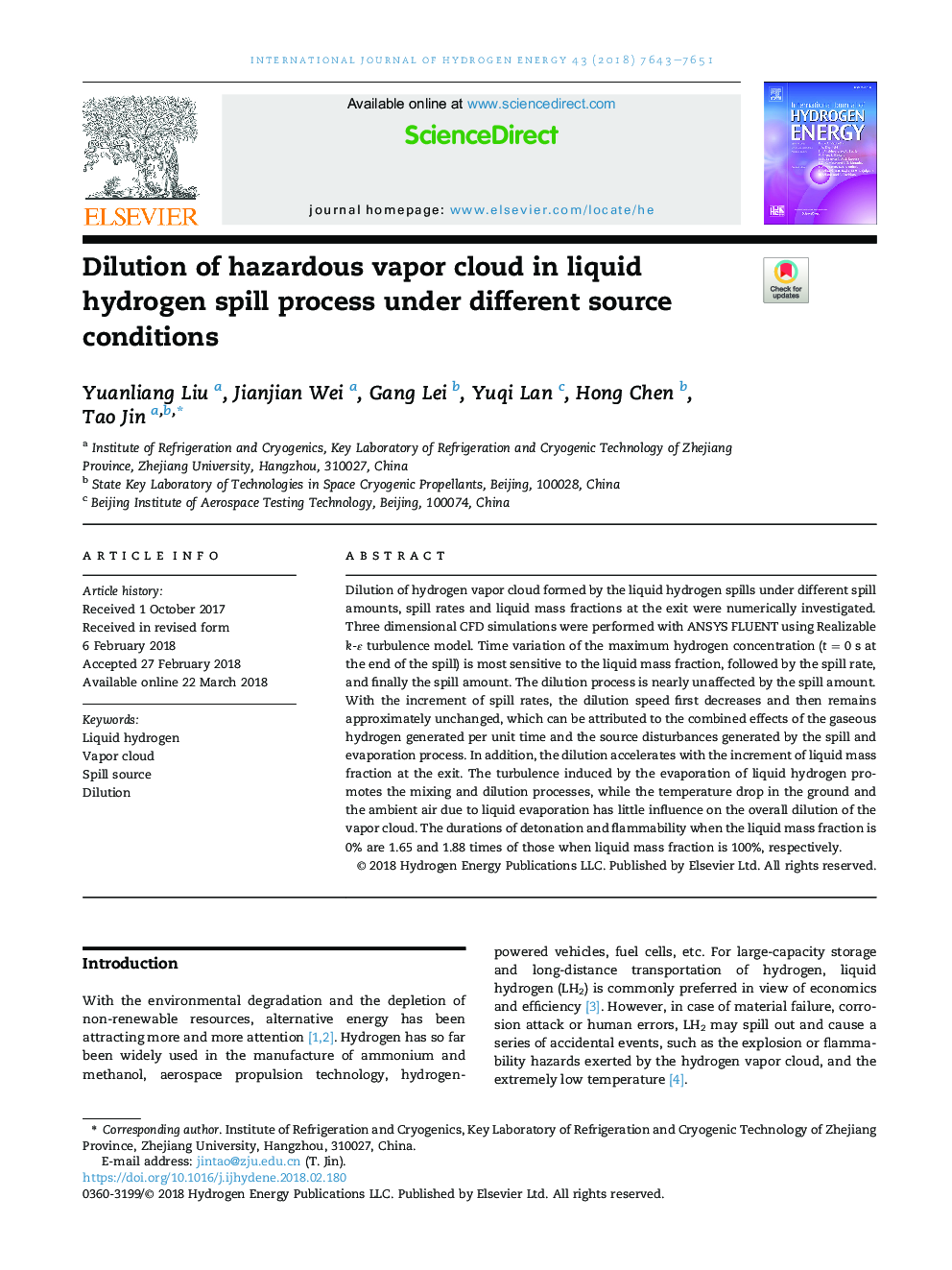| Article ID | Journal | Published Year | Pages | File Type |
|---|---|---|---|---|
| 7706660 | International Journal of Hydrogen Energy | 2018 | 9 Pages |
Abstract
Dilution of hydrogen vapor cloud formed by the liquid hydrogen spills under different spill amounts, spill rates and liquid mass fractions at the exit were numerically investigated. Three dimensional CFD simulations were performed with ANSYS FLUENT using Realizable k-ε turbulence model. Time variation of the maximum hydrogen concentration (t = 0 s at the end of the spill) is most sensitive to the liquid mass fraction, followed by the spill rate, and finally the spill amount. The dilution process is nearly unaffected by the spill amount. With the increment of spill rates, the dilution speed first decreases and then remains approximately unchanged, which can be attributed to the combined effects of the gaseous hydrogen generated per unit time and the source disturbances generated by the spill and evaporation process. In addition, the dilution accelerates with the increment of liquid mass fraction at the exit. The turbulence induced by the evaporation of liquid hydrogen promotes the mixing and dilution processes, while the temperature drop in the ground and the ambient air due to liquid evaporation has little influence on the overall dilution of the vapor cloud. The durations of detonation and flammability when the liquid mass fraction is 0% are 1.65 and 1.88 times of those when liquid mass fraction is 100%, respectively.
Keywords
Related Topics
Physical Sciences and Engineering
Chemistry
Electrochemistry
Authors
Yuanliang Liu, Jianjian Wei, Gang Lei, Yuqi Lan, Hong Chen, Tao Jin,
